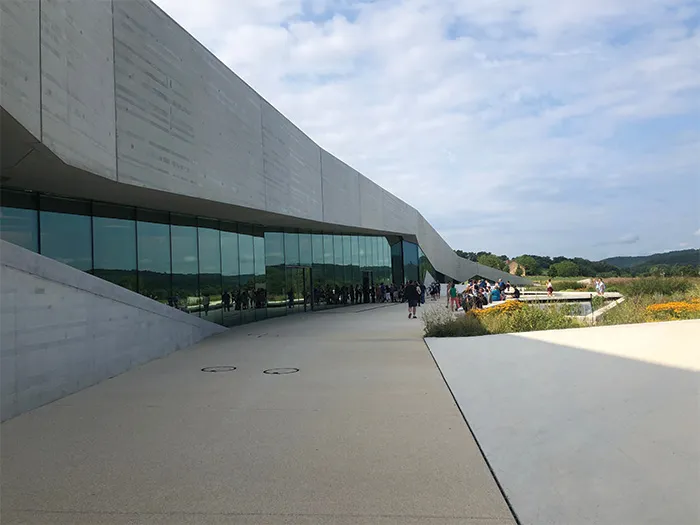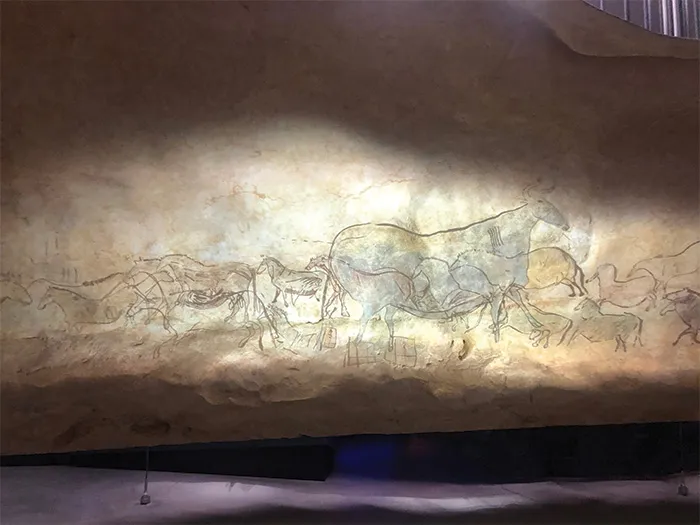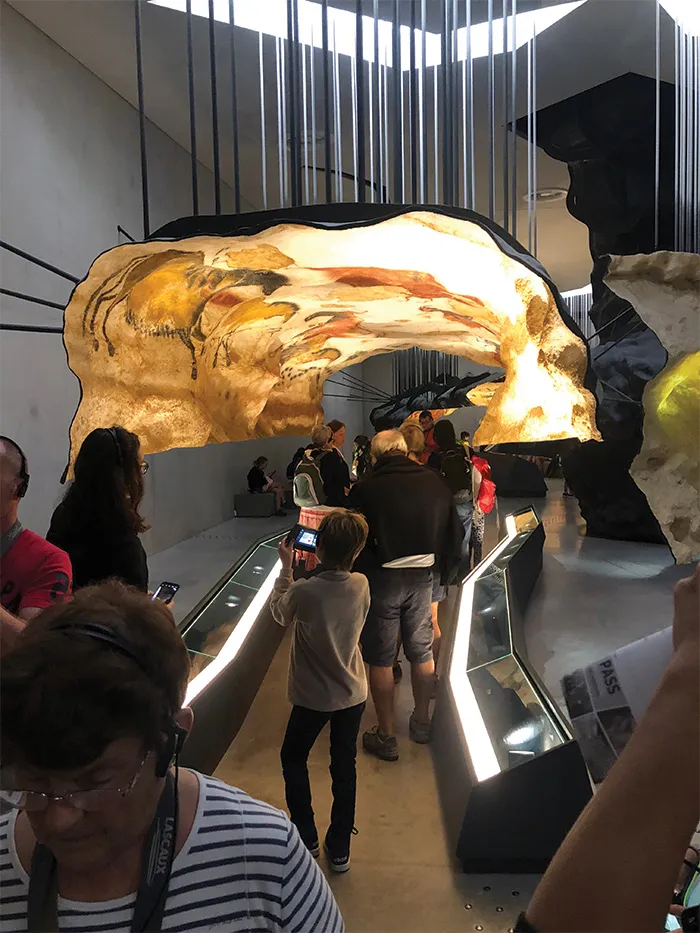A Paradise for Poets and Prehistorians
Described as a “country of enchantment” and compared to paradise on earth, the Vézère Valley in southwestern France has captivated poets, travelers, and archaeologists alike. It’s no surprise that the highly intelligent Cro-Magnon people, with their deep sense of beauty, chose to settle here. In recent years, this magical region has witnessed a surge in tourism, with prehistoric sites like Font-de-Gaume drawing long queues of eager visitors even before dawn.
The Journey to Lascaux IV: Where the Past Meets the Future
Last summer, bypassing the early morning rush at Font-de-Gaume, I followed my GPS through dense oak woods and emerged into a vast plaza. There, a dramatic monolithic structure resembling a concrete cliff stood in stark contrast to the surrounding nature — this was Lascaux IV, a modern homage to ancient wonders and one of the most ambitious archaeological projects in the world today.

Discovery of the Original Lascaux Cave
The original Lascaux cave was discovered in September 1940 by four teenage boys — Marcel Ravidat, Jacques Marsal, Georges Agniel, and Simon Coencas — and their dog, Robot. What began as a search for hidden treasure led them to one of humanity’s greatest artistic achievements, filled with vibrant cave paintings dating back to around 18,000 BC.
By 1963, the cave’s popularity led to its closure to preserve the delicate artwork, as carbon dioxide and moisture from visitors caused damage. To keep the legacy alive, replicas such as Lascaux II and the travelling Lascaux III were created. However, with growing tourism demands, a new solution was required — enter Lascaux IV.
Lascaux IV: A 21st-Century Archaeological Triumph
Opened in December 2016 and costing €60 million, Lascaux IV: Centre International de l’Art Pariétal is a stunning blend of cutting-edge technology and faithful reproduction. Designed by Norwegian architectural firm Snøhetta, the center seamlessly merges modern aesthetics with ancient storytelling.

A Faithful Replica of the Original Cave
Visitors enter in timed groups, guided by young docents equipped with headsets. The experience begins with an engaging audiovisual introduction, re-telling the story of Robot and the four boys. The tour then continues into the painstakingly recreated replica of the original Lascaux cave — every painting, texture, and contour accurately reproduced. The low lighting and cool temperatures replicate the authentic feel of the ancient space, providing a deeply immersive experience.
The Digital Gallery: Technology Enhancing Understanding
After the cave visit, guests enter a large exhibition hall and receive tablets for a more interactive exploration. Each section of the cave is presented in a deconstructed format. The tablet recognizes your location and delivers concise, engaging explanations. You can zoom in on artworks, analyze details, and even take photographs that are emailed to you later.
Children are given specially adapted tablets, encouraging them to explore prehistoric art in a fun and educational way. Interactive stations allow visitors to try Palaeolithic painting techniques and learn about the tools used by early humans, making archaeology both accessible and exciting for all ages.
Honoring the Discoverers and the Legacy
In a quiet area of the center, a small tribute honors the four young discoverers and the archaeologists who recognized the site’s value. Their lives were forever changed by that fateful day in 1940. Marcel Ravidat would go on to join the Resistance, while Simon Coencas narrowly escaped Nazi persecution. Their role in preserving cultural heritage remains an inspiring tale for generations.

Why Lascaux IV Is More Than Just a Replica
Despite being a reproduction, Lascaux IV offers an authentic experience for the digital age. The seamless integration of immersive environments, digital storytelling, and educational content creates a space where both children and adults can truly connect with prehistory.
While some critics label such efforts as “Disneyfication,” Lascaux IV avoids kitsch and embraces thoughtful engagement. The combination of cutting-edge design and archaeological reverence ensures the site remains a cultural and educational treasure.
Economic and Cultural Impact
Located in rural Montignac, far from France’s major cities, Lascaux IV serves as a powerful economic driver. Funded by national, regional, and EU investments, with limited private contributions, the center supports local employment and tourism. It also demonstrates how cultural heritage can sustainably boost regional development — an increasingly important lesson as global tourism continues to grow.

By attracting over 500,000 visitors annually, Lascaux IV rivals other major heritage destinations in impact, even if not in numbers. Unlike overburdened sites like the Acropolis or Colosseum, Lascaux IV offers a managed and high-quality visitor experience.
Conclusion: A New Model for Cultural Tourism
Lascaux IV stands as a model for future archaeological and cultural investments, especially in regions away from metropolitan centers. It captures the imagination of children, educates the curious, and preserves the legacy of Cro-Magnon art with conceptual brilliance.
The story of Lascaux — discovered by chance, revered by experts, and now resurrected for modern audiences — is more than an archaeological tale. It is a testament to the power of place-making, storytelling, and cultural memory in shaping how we connect with our shared human past.


